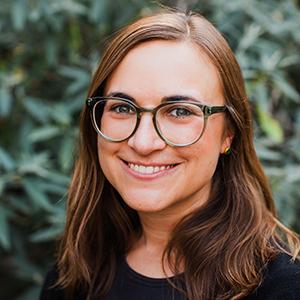
Fall Quarter Office Hours: Mondays, 3:00 - 5:00 pm
Specialization:
Art of North America, nineteenth and twentieth centuries; landscape and ecologies; sculpture, decorative arts, and material culture; photography; theories of value and exchange; decolonial and critical theory
Education:
Ph.D. Harvard University
M.A. Harvard University
M.A. Tufts University
B.S. The Catholic University of America (mathematics)
Bio:
Christine Garnier is a scholar of modern and contemporary art, with a particular focus on material, economic, and environmental histories. Her research weaves together histories of Indigenous and settler art from across North America to explore how objects mediate power relations from the nineteenth century through today.
Garnier is working on her first book, tentatively titled “The American Silverscape: Art, Land, and Extraction, 1848-1905.” This project explores how nineteenth-century silver artworks became flashpoints in debates over land use, natural resources, and Indigenous sovereignty in the United States, issues that persist into the present. The book establishes the “silverscape” as a material and political framework that holds together an imperial gaze over land targeted for extraction and silver’s capacity to disrupt nationalist imagery while amplifying Indigenous priorities and more-than-human relations. Extending beyond the two-dimensional media of landscape painting, print, and photography, this study resituates a range of silver artworks—presentation vases, exposition monuments, peace medals, soup tureens, and squash blossom necklaces—within place-based histories of extraction to demonstrate how objects relayed Indigenous protest to land seizure.
Garnier received her PhD in art history from Harvard University. Before coming to UCSB, she was a postdoctoral fellow at the USC Society of Fellows in the Humanities. Her research has been supported by institutions including the Center for Advanced Study in the Visual Arts at the National Gallery of Art, the Smithsonian American Art Museum, the Huntington Library, and the American Council of Learned Societies (ACLS).